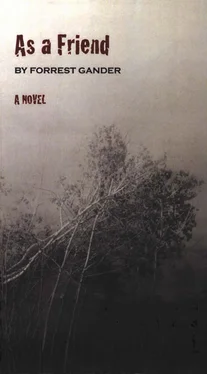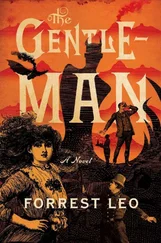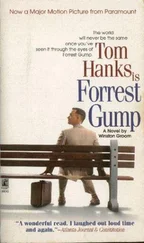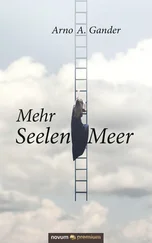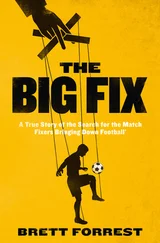Aglow with sweat, the daughter holds her breath and her eyes break away from all of them toward the ceiling, beyond the ceiling. They focus wildly on a pain that is no one else’s.
Looking from her beet-red face downward, the widow can see for herself the bones of her daughter’s pelvis giving way. Spreading like syrup.
Breathe! Breathe! You’re doing this to yourself! the midwife snaps. One of the aides, swallowing her gum, echoes her crazily.
Breathe! Breathe! she implores, looking about frantically, as though someone might halt the imminent tragedy in order to reassure her.
And the daughter draws in a cluster of tiny sips of air, quick shudders like a car over gravel, mouthing the words, Save me, Save me, her body contorted into a relentless spasm.
All the mother has never thought begins to pour out of her. I love you, I forgive you, I love you, forgive me. And the girl simultaneously mouthing, I’m dying, I’m dying, her face a hideous garnet.
You can breathe! Breathe! the midwife barks. The girl’s eyes roll back, her terror fixed on nothing in the room.
At which point an electrical failure spirals along the nape of the older woman’s neck and her brain flickers behind her eyes. She stumbles backwards, backwards, feeling backwards with her blind hands behind her. Backs into the wall like a sightless animal, her face drained utterly. Down she slides not wanting to lose consciousness, down the wall, knees buckling, haunches patting the floorboards, chin nutating into bosom, yet straining in her mind to stay present.
Which is when the head begins to sweep out, the perineum dilating around it to thin transparency. A shriek.
Burns! It burns!
As though a thread were pulled away, thin bright blood flicks toward her left flank as the perineum rips. Body contracting in short pushes, the breath returning, she begins to pant through her teeth like a mad beast, past all screaming.
Baby forehead, top of brow, face covered in white grease. A pause in its descent. The midwife supporting the weird head at the vagina, saying Stop, stop pushing, stop now, don’t push.
Probing with her fingers and finding the umbilical cord, a length around the throat. The baby’s face screwed sideways, dark purple under a chalky mask, the section of cord visible to the mid-wife, bluish and vesselled.
She speaks to her assistants. Reaches into her smock and hands something white to each of them.
Why, these are shoelaces, one says.
From the widow collapsed against the wall, a gurgle. Inhuman noises.
The midwife wedges the syringe into the infant’s mouth while the girls tie off the cord. She repositions the syringe, releasing the bulb. Withdraws it, squeezes it onto the floor. Pokes it into a tiny nostril. The other. Then she brings the scissors from her smock and cuts the cord, one quick bloody spurtle. Twists the head a quarter turn and unwraps the sausage-like length of cord.
Now push hard! Now do it! the midwife orders. Supporting the head with one hand and pressing down on it with the other, she flinches as she feels the instant of the baby’s collarbone breaking. Push, push! One at a time, shoulders emerging. Push! The body whooshes out. Prune face, wrinkled flesh in bloody vernix.
It’s a boy, she thinks and wonders if she has spoken aloud. Purple rubber doll, dead-looking. He kicks and she drops him and catches him before he falls.
A peculiar faraway catwail beginning. And everything suddenly at a distance. The midwife drifting into a wholesale unmindfulness. God help me, she thinks vaguely. Above the tiny piercing yowl that seems to come not from the little jerking weight between her two palms but from every corner of the room, she hears the daughter weeping. The one aide choking and coughing. The other absolutely silent.
Against the wall, the older woman has lost them in a rich spiritual failure, and she cannot stand.
* * *
The young mother’s memory of the birth is incoherent. The event singes her so profoundly that it leaves little residue, a bleat of time in which her acting self displaced the self that watches, judges, records. Although she preserves a repertoire of images, and one unforgettable sound, she has no way to process them, to integrate them into the main chapters of her life. Her life moves on. The intense fragments of those hours she thought would kill her are gradually replaced by a furtive curiosity.
As for the infant, he disappears. Someone adopts him. The birth mother tells herself, as she turns nineteen, twenty-one, twenty-four, twenty-eight, that she does not long for him. But each waking day, she imagines him, and sometimes in strange dreams. Even after she marries and has other children. She imagines him. Her lost boy. Whatever became of him?
Clay: Landscape with a Man Being Killed by a Snake
* * *
Les let himself in without knocking and two at a time shot up the stairs like he was escaping a bear. I heard the clang of his ring on the banister, the pitch of his footfall rising. He entered the living room through the kitchen and ceremoniously placed a piece of paper on the door-on-four-cin-derblocks that served for a table by the couch where I was rolling a joint. It’s for you, he said.
Les liked staging dramatic interactions from which he could exit quickly, leaving a charged space behind him. His resonance. He would punctuate the remarkable things he said with silences, his extravagant gestures with absence. Looking back, I imagine that he was practicing his death. And when he came into my apartment that night and handed me a poem, he was securing my role in it.
I thought then: he loves me. That’s what this means. That’s why he drove here to give me this piece of paper with a poem on it and then say he had to go. I thought: we have an incomparable intimacy. He wrote something for me.
The poem was titled “The Plot.”
* * *
At that time, Les was the only one of us who was married, and he’d already been married twice, a flat out mystery to me. It had to have been the fact of his adoption, his uncertainty about family, some hunger to be loved. Maybe an undertow of anxiety that no one could see led him to formalize an idea about how adults were supposed to act: if you lived with a woman, you married her and then you had kids. It was curiously old-fashioned.
But other women didn’t leave Les alone, nor he them. Come-ons, experiments, tendril passions. I remember him telling me that one life didn’t allow for the possibilities of one man. As if I had settled for something less than he had.
His second wife’s name was Cora. No one among our friends had known the first, his high-school sweetheart.
Few of us knew Cora either. She lived on the small farm her parents bequeathed her, across the state line in Pineville, Missouri. She’s a painter, Les would say. But otherwise, he didn’t talk about her. Their phone number was either unlisted or more probably, considering Les’s penchant for mysteries, listed under an alias. At least three times a month, Les would drive into Missouri to see Cora “at the farm.” So he let on to me once when we were surveying. He’d somehow convinced Cora that the farm was a better place for her to paint, that Eureka Springs was where he needed to live for work, and that Sarah, who everyone in Eureka Springs knew was not only his roommate, but his lover, was a militant lesbian who paid her share of the rent but was rarely around. In any case, on those evenings when the survey crew fell together at Lana’s Café for dinner, Les would always make a call to his wife from the pay phone near the bathrooms. Presumably, it would have been awkward to call her from the house he shared with Sarah.
And even though Les was married to Cora and living with Sarah, it was fairly clear to everyone else that he was making the rounds. With the potter, the folk singer, the bartender.
Читать дальше
